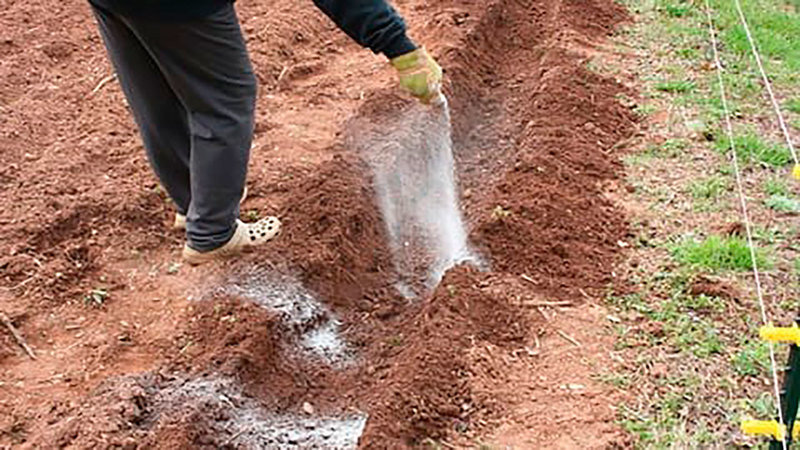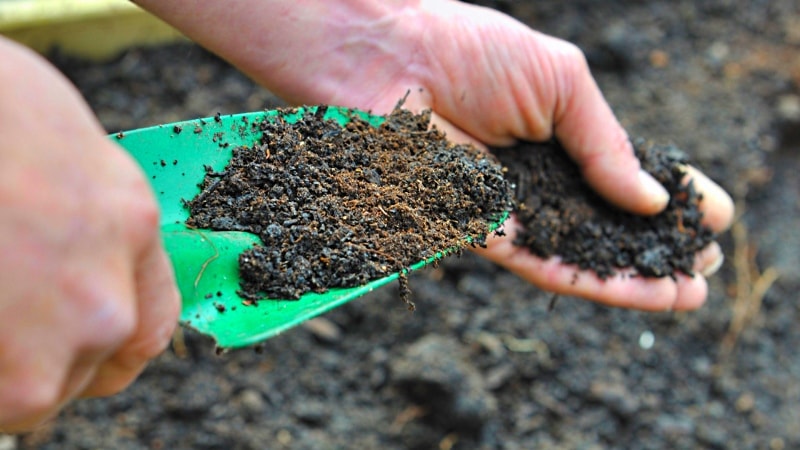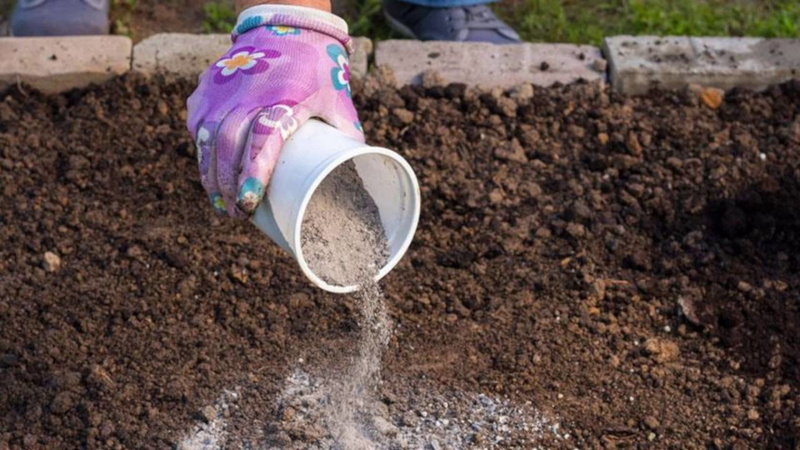What types of dressings are best used when planting potatoes
Planting is the most important stage in potato farming. The speed of plant development, resistance to fungi and pests, and the productivity of the crop depend on the correct determination of the term, the depth of planting the tubers and the choice of fertilizer. Complex fertilizers are a guarantee of the harmonious development of the plant throughout the entire growing season.
The article contains useful information about feeding potatoes when planting, methods of introduction and the benefits of organic matter and minerals.
The content of the article
Do potatoes need fertilizers when planting
Potatoes have a peculiarity - when applying dressings after planting, they absorb only 50% of nutrients. To maintain yields, the crop is fed at the stage landing into the hole, and due attention is paid to the pre-planting soil preparation. We are talking about sowing siderates - lupine, mustard, beans, peas, flax, oats, wheat, alfalfa, rapeseed - followed by mowing. Overripe hay saturates the soil with nitrogen, loosens, and prevents the growth of pathogenic microflora.
Another difference between potatoes and other crops is active absorption of organic and mineral compounds by the root system... They are necessary for the plant to quickly build up green mass, to form more stolons and tubers.

Top dressing when planting
During planting work, fertilizers are applied to the prepared holes. In the future, to replenish the reserves of nutrients, root and foliar organic and mineral dressings are carried out. At the same time, it is important to observe the proportions, because an excess is sometimes worse than a deficit.
Excessive fertilization with nitrogen leads to an active set of green mass and shrinkage of tubers. An excess of organic matter provokes the formation of voids in the potato - the growth of internal tissues does not keep pace with the growth of tubers.
Reference. According to agronomists' calculations, 1 kg of tubers "draws" about 10 g of potassium, 5 g of nitrogen, 2 g of phosphorus, less than 1 g of zinc, copper, manganese, boron from the soil.
Fertilizers are applied to the wells in a complex manner, observing a balance. It is preferable to apply organics in the fall, before planting, supplementing with minerals in the spring.
Why is it so important to apply fertilizer to the hole? The fact is that the root system of potatoes develops in the upper layers of the soil and penetrates deep into a maximum of 50 cm. With this method of application, the feed goes directly to its destination.
How to fertilize in the spring in the hole
Before planting tubers in the ground, it is fed with useful substances. The first root application of dressings is carried out precisely at the planting stage: the prepared mixtures are placed in the pits. For example, along with the seeds, add 700 ml of compost or humus to the holes, mixed with 150-200 g of ash or 25 g of nitrophoska and 100 g of bone meal.
What feeding can be used
To feed potatoes, mineral, organic and complex dressings are used. We will tell you more about each of them.
Mineral
Many gardeners prefer to fertilize potatoes with organic matter, fearing that nitrates will be exceeded when introducing ready-made compounds. However, the same compost or manure can easily overfeed the soil.
As a result, the level of nitrates will be extremely high. Agronomists advise observing the norms for adding minerals, which allows you to get a healthy harvest.
| Name of substance | Application rate | Act |
| Urea or carbamide (nitrogen) | 1.5 kg per 100 sq. m (15 g in each well). | It is more effective on alkaline soils, accelerates the growth of greenery, increases productivity. |
| Ammonium nitrate (nitrogen, sulfur) | 20 g per hole on poor soils, 10 g on fertile soils.
|
Promotes active plant growth |
| Azofoska (nitrogen, potassium, phosphorus, sulfur) | 3 g for 1 tuber | Strengthens the root system, promotes heap tuberization, prevents the development of fungal diseases |
| Superphosphate (sulfur, calcium, phosphorus) | 2 kg per 1 hundred square meters (25 g per 1 hole) | Promotes the growth of green mass, stimulates the accumulation of nutrients in the tubers
|
| Potassium sulfate and potassium magnesium | 250 g per 100 sq. m (3 g per hole). | Strengthens the immune system, increases the content of vitamin C |
| Granular cement dust (potassium) | 600-900 g per 100 sq. m | Increases yield and starch content in tubers |
| Phosphorous flour | 400-700 g per 100 sq. m | Used to deoxidize the soil, increase soil fertility |
| Magnesium sulfate (magnesium and sulfur) | 100 g per 100 sq. m | Accelerates photosynthesis, increases starchiness |
| Dolomite flour (magnesium) | For slightly acidic soil - 3.5 kg, for moderately acidic - 4.5 kg, for acidic - 5 kg per 100 sq. m | Accelerates photosynthesis, increases starchiness |
Reference. Superphosphate is recommended to be used as a self-feeding, without mixing with other substances. This top dressing works more effectively alone.
Organic

Organic or biological fertilizers - waste products of plants, animals, bacteria. Organic matter increases the fertility of the soil, replenishes the stocks of complex nutrient components of potatoes.
| Name | Application rate | Act |
| Manure (cow, horse, rabbit, sheep, pork) | In the fall, they are buried in the ground to a depth of 40 cm - 400 g per 100 sq. m.
Put 200-250 g of top dressing in the hole under the tuber. Application frequency - once every 3-5 years |
Loosens the soil, increases the nutritional value of the soil and the productivity of potatoes |
| Litter (chicken, goose, quail, pigeon) | It is used only as a solution in a 1:15 ratio. One hole - 1 l | Saturates the plant with phosphorus |
| Compost | 1 liter in each hole (120 kg per 100 sq. M) | Loosens the soil, increases the nutritional value of the soil and the productivity of potatoes |
| Peat (lowland and transitional) | 100-200 g in each well (40 kg per 100 sq. M) | Saturates the soil with nitrogen and sulfur, acidifies the soil |
Fresh organic matter is not embedded in the soil, only rotted manure is used. Ammonia compounds during evaporation have a detrimental effect on beneficial bacteria. Humus is prepared 9-12 months before use - stacked in stacks 1-1.5 m high and covered with straw.
An excellent substitute for manure is compost. This is a decayed and fermented plant mass. For cooking, use any greens (weeds, grass, tops, foliage), vegetable peelings.
The whole green mass, together with the roots, is put into a 200-liter galvanized barrel, 100-150 g of urea is added to accelerate the decomposition process. The container is filled to the brim with water, covered with a lid and left for two weeks. The resulting top dressing is applied undiluted to each well.
Complex
Any potato dressing should contain a set of nutrients in the correct proportions. Complex mineral fertilizers fully satisfy the needs of the crop.
| Name | Application rate | Act |
| Ammofoska (nitrogen, phosphorus and potassium) | In 1 hole - 10 g per tuber (3 kg per 100 sq. M) | Increases productivity and keeping quality, stimulates the growth of the root system |
| Nitrophoska and nitroammofoska (ammonium and potassium nitrate, calcium chloride, superphosphate) | 10 g in each well (4-5 kg per 100 sq. M) | Nourishes, protects the plant from fungi and insect pests |
| "Complex fertilizer for potatoes" from the "Buysky chemical plant" (nitrogen, phosphorus, potassium, sulfur, magnesium, copper, zinc, iron, manganese, boron, humic acids) | 20 g in each well | Prevents the accumulation of nitrates in tubers, increases the yield and nutritional value of potatoes |
| "Kemira" | 50-70 g of dry granules mixed with earth, after watering the holes. | Increases productivity, improves taste, lowers nitrate levels, improves immunity |
| Fertika Potato-5 from CJSC Fertika (nitrogen, phosphorus, potassium, magnesium, sulfur, calcium, boron, copper, manganese | 15-20 g per well | Increases yield, improves taste, reduces nitrate levels |
| Bona Forte from Bona Forte (nitrogen, phosphorus, potassium, silicon, calcium, boron, zinc, manganese, molybdenum, titanium, magnesium) | 2-3 g per well | Increases yield and sucrose content in fruits |
Folk remedies
In addition to plant (green) fertilizers, gardeners use fresh yeast to feed potatoes when planting. For 1 kg of pressed yeast, you will need 5 liters of warm water. The solution is infused for 6-7 hours and diluted with water in a ratio of 1:10 before use.
Advice... "Live" yeast can be replaced with dry yeast. In this case, take 10 g of granules per 5 l of water, then add water 1: 5. The solution is used to feed the soil after spring loosening.
Onion peels are advised to be added to the holes not for the purpose of fertilization, but to scare away the wireworm. Judging by the reviews of gardeners, this technique works great against the larvae of the click beetle.
To scare off the Colorado potato beetle, 1 tsp is placed in the hole for each potato. tobacco dust and flax seeds.
Ash

Wood ash is a complex alkaline top dressing. It contains calcium, potassium, magnesium, sodium, phosphorus in an easily accessible form for assimilation. Burned wood does not contain nitrogen. It volatilizes during combustion. However, it is not worth combining ash with nitrogen fertilizers. This leads to the release of ammonia, which is dangerous for plants in large doses.
Consumption per 100 sq. m - 5-10 kg or 100 g in each hole. Natural fertilizer is applied dry in the wells when planting alone or in combination with other mineral fertilizers - superphosphate, potassium chloride, ammophos. Top dressing improves the quality of the soil, reduces its acidity, and increases the yield of potatoes.
Recommendations of experienced gardeners

Over the years of practice, gardeners have accumulated vast experience in feeding potatoes during planting, which they share on thematic forums:
- Potatoes need a lot of potassium, so when planting tubers, it is better to use fertilizers with it. For example, ammophoska and nitrophosphate.
- Cow dung is considered to be one of the best fertilizers for potatoes. It can be applied in the fall after digging the soil, and during the planting process, abundantly water the wells with a solution of fertilizer.
- Ready-made complex dressings for potatoes should be chlorine-free. The plant reacts painfully to this element by stopping growth. When buying, pay attention to the mark "Chlorine free", "Chlorine free".
- Control nitrogen application to the wells. With an overabundance, the bushes will quickly grow, and the tubers will be small. Potassium-phosphorus fertilizers during the growing season will help to correct the situation.
- Use dolomite or bone meal to reduce planting labor. Spread fertilizers over the beds according to the instructions.
- Urea is suitable for fertilizing the soil in autumn and spring. Ammonium nitrate and ammonium sulfate are used only when planting potatoes.
- Nitrogen fertilizers should not be embedded too deeply. They show the best results when applied for shallow plowing.
- Do not mix ammonium sulfate and ammonium nitrate with dolomite flour or urea with superphosphate. Add minerals separately.
- Do not use manure or compost on areas infested with golden potato nematode. In such cases, mineral formulations are suitable.
- Sow green manures on the plots before or during potato planting: clover, peas, beans, oats, mustard, lupine, flax, alfalfa, rapeseed. The root system of these plants is located above the tubers and does not interfere with the development of potatoes. Culture will only benefit from such a neighborhood.Siderata enrich and loosen the soil, scare away the wireworm, Colorado potato beetle, bear, prevent the development of scab and late blight.
- If you chose peat as a fertilizer for fertile soil when planting, do not use it fresh, let it lie in the open air for 3-4 days. Use pure peat on sparse clay and sandy soils.
- Do not apply ash at the same time as ammonium nitrogen. As a result of a chemical reaction, it makes nitrogen fertilization useless.
Read also:
Conclusion
When planting, organic, mineral and complex fertilizers for potatoes provide them with nutrients, which are quite enough for the rapid growth and development of tubers. The culture is distinguished by its ability to absorb potassium, phosphorus, nitrogen, magnesium, silicon, boron and other components from the fertilizers applied at the initial stage.
With subsequent root and foliar dressing, nutrients are absorbed only by 50%. Agronomists advise to apply fertilizers to the hole in a complex manner, combine organic matter and minerals, observe the dosage indicated on the package.